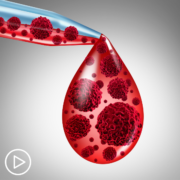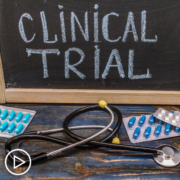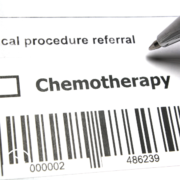How Can Variable Patient Groups Be Addressed in CAR T?
How Can Variable Patient Groups Be Addressed in CAR T? from Patient Empowerment Network on Vimeo.
Can CAR T-cell therapy address variable patient groups? Expert Dr. Krina Patel from The University of Texas MD Anderson Cancer Center discusses variances in different myeloma patient groups, the KarMMa-3 study, and proactive advice for patients.
[ACT]IVATION TIP
“…if you are in a area, let’s say rural America where you don’t have access or you are in a minority population, African American, Hispanic, etcetera, or older, frail patients who are older that are considered vulnerable as well, absolutely make sure to talk to your doctors about these novel therapies because you still can get them safely and they will work. They can work. You just have to go to a center where they know how to adjust those types of therapies to make sure you get the best options out there as well.”
Download Guide | Descargar Guía
See More from [ACT]IVATED CAR T
Related Resources:

What Patient Types Are Good Candidates for CAR T-Cell Therapy? |

Are There Myeloma Trials Investigating CAR T for Frontline Therapy? |

A Look at Promising Strategies to Improve CAR T-Cell Therapy Access |
Transcript:
Lisa Hatfield:
Dr. Patel, how might the heterogeneity of patient populations impact the standardization and reproducibility of CAR T therapy outcomes across different clinical settings, and what initiatives are in place to address this variability?
Dr. Krina Patel:
Yeah, I think that’s a great question because again, this is a personalized therapy. So it depends on what your myeloma is like, the genomics, the genetics of your myeloma, how aggressive is it, plus your T cells, right? And so everybody’s genetic ancestry, etcetera, is very different. So the idea of a personalized medicine, more than just even across groups of people, it’s at the individual level. And I think when you talk about different races or ethnicities, we have seen some differences in our real-world data, in very relapsed/refractory patients, where people can get great response rates still.
So, for instance, Caucasian patients versus African American patients, our response rates are still high in the 80s and 90 percent, but the toxicity is a little bit higher in our African American patients. It’s still not high grade. It’s not anything that makes me say, I’m not going to give this, but the baseline inflammatory markers are a little bit higher. And so once we get the CAR T, our patients tend to get a little bit more CRS.
They end up in the hospital a little bit longer. Now, again, this is a multivariate analysis and we couldn’t find any other difference, but when we look at KarMMa-3, which is one of our big studies that led to ide-cel (idecabtagene vicleucel) [Abecma] being approved early, we actually had an outcomes of African American patients only that we looked at and that we presented just this past TCT, and response rates were actually a little bit better.
Again, you can’t compare them because the numbers aren’t there to power that to compare, but numerically the numbers were better in terms of response rate, in terms of progression-free survival, it was actually more months that it beat the standard of care and we didn’t see more toxicity.
And so I think we do need to look at these things and make sure there’s not one group of patients has a lower efficacy for some reason, and why is that and how can we improve that? And so far, we don’t really see that. And the other is the toxicity piece, to make sure that these therapies that do cause some strange toxicities that we’re watching and seeing who might be more vulnerable to those toxicities, who do we need to maybe even prevent, do prevention strategies for, but so far we haven’t seen it.
And then I think coming back to the individual, right?So again, all of us have these different T cells that have different mutations in them, and some folks, for some reason, even with less myeloma, their T cells just expand really fast and other folks, they don’t. And so in the future to get best outcomes, we need to see how we can turn the volume lower for those folks who have really sensitive T cells.
And for those who don’t, how do we, what else can we add in combination to actually increase those T cells so that they’re actually doing a better job at killing the myeloma, right? And including the microenvironment too. So I think there’s a lot of translational work as well as the epidemiology side of things to say, okay, how do we first diagnose the problem, find the problems, and then how do we figure out how to intervene to then improve outcomes for all our patients? I think the activation tip here is that if you are in a area, let’s say rural America where you don’t have access or you are in a minority population, African American, Hispanic, etcetera, or older, frail patients who are older that are considered vulnerable as well, absolutely make sure to talk to your doctors about these novel therapies because you still can get them safely and they will work. They can work. You just have to go to a center where they know how to adjust those types of therapies to make sure you get the best options out there as well.
Share Your Feedback
Create your own user feedback survey










